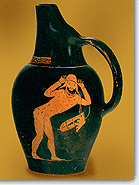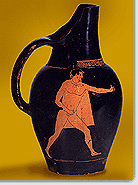


 Even before the Persian Wars, the Hellenes were aware that they made up a racial and cultural community clearly distinct from the barbarians surrounding them. The component parts of this differentiation were the cities' language, religion and institution. The Persian invasion may have made the Hellenes coalesce in an effort to defend their autonomy, but it did not lead them to form a permanent coalition. Collective victory was part of the imaginative world of each city. But the fact that many Hellenes had sided with Persia created yet one more factor of separation. In each case, the conflict signalled the end of the period of ripening of the Hellenic cities and the marking out of Athens and Sparta as leading powers. The onset of aggressive war, after the sea battle of Mycale, led to the liberation of the Ionian cities; but these turned into tributaries of Athens. The Spartans' refusal to go on with the war expresses their disinclination to get mixed up in long-range operations and their decision to stabilize their power in mainland Hellas by bringing out the need to punish cities that had medized.
Even before the Persian Wars, the Hellenes were aware that they made up a racial and cultural community clearly distinct from the barbarians surrounding them. The component parts of this differentiation were the cities' language, religion and institution. The Persian invasion may have made the Hellenes coalesce in an effort to defend their autonomy, but it did not lead them to form a permanent coalition. Collective victory was part of the imaginative world of each city. But the fact that many Hellenes had sided with Persia created yet one more factor of separation. In each case, the conflict signalled the end of the period of ripening of the Hellenic cities and the marking out of Athens and Sparta as leading powers. The onset of aggressive war, after the sea battle of Mycale, led to the liberation of the Ionian cities; but these turned into tributaries of Athens. The Spartans' refusal to go on with the war expresses their disinclination to get mixed up in long-range operations and their decision to stabilize their power in mainland Hellas by bringing out the need to punish cities that had medized.
|
| |
|
Note: Click on pictures to see a short description. | |